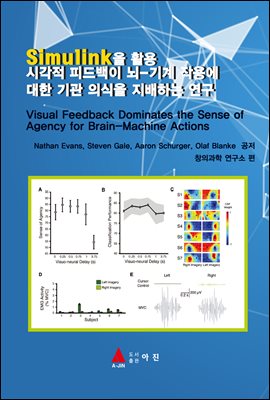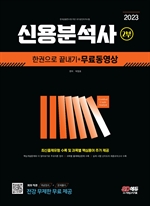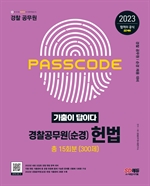
시각적 피드백이 뇌-기계 작용에 대한 기관 의식을 지배하는 연구
- 저자Nathan Evans, Steven Gale, Aaron Schurger, Olaf Blanke 저
- 출판사아진
- 출판일2020-07-13
- 등록일2020-12-21
- SNS공유


- 파일포맷PDF
- 파일크기12MB
- 공급사YES24
-
지원기기
PC
PHONE
TABLET
프로그램 수동설치
전자책 프로그램 수동설치 안내
아이폰, 아이패드, 안드로이드폰, 태블릿,
보유 1, 대출 0,
예약 0, 누적대출 5, 누적예약 0
책소개
Recent advances in neuroscience and engineering have led to the development oftechnologies that permit the control of external devices through real-time decoding
of brain activity (brain-machine interfaces; BMI). Though the feeling of controlling
bodily movements (sense of agency; SOA) has been well studied and a number of
well-defined sensorimotor and cognitive mechanisms have been put forth, very
little is known about the SOA for BMI-actions. Using an on-line BMI, and
verifying that our subjects achieved a reasonable level of control, we sought to
describe the SOA for BMI-mediated actions. Our results demonstrate that
discrepancies between decoded neural activity and its resultant real-time sensory
feedback are associated with a decrease in the SOA, similar to SOA mechanisms
proposed for bodily actions. However, if the feedback discrepancy serves to correct
a poorly controlled BMI-action, then the SOA can be high and can increase with
increasing discrepancy, demonstrating the dominance of visual feedback on the
SOA. Taken together, our results suggest that bodily and BMI-actions rely on
common mechanisms of sensorimotor integration for agency judgments, but that
visual feedback dominates the SOA in the absence of overt bodily movements or
proprioceptive feedback, however erroneous the visual feedback may be.
목차
제 1편 : SIMULINK 기본편1.1 SIMULINK의 시작 1
블록의 연결 5
블록 파라미터의 설정 7
시뮬레이션 파라미터 (Configuration Parameters)의 설정 8
시뮬레이션의 수행 9
블록 파라미터의 표시 9
복수 데이터의 표시 11
2.2 동적 시뮬레이션 13
이차 미분방정식 17
선형 상태변수 모델 23
DC 모터의 시뮬레이션 24
함수 블록의 사용 29
차분방정식(difference equation)의 모델링 34
Subsystem(부시스템)의 구성 37
제 2편 : 연구논문
Visual Feedback Dominates the Sense of Agency for Brain-Machine
Actions
1. Introduction 41
2. Materials and Methods 42
3. Electromyography (EMG) 43
4. Experimental protocol and measurements 44
5. EEG data processing 47
6. Results 49
7. Discussion 53
8. References 55

















